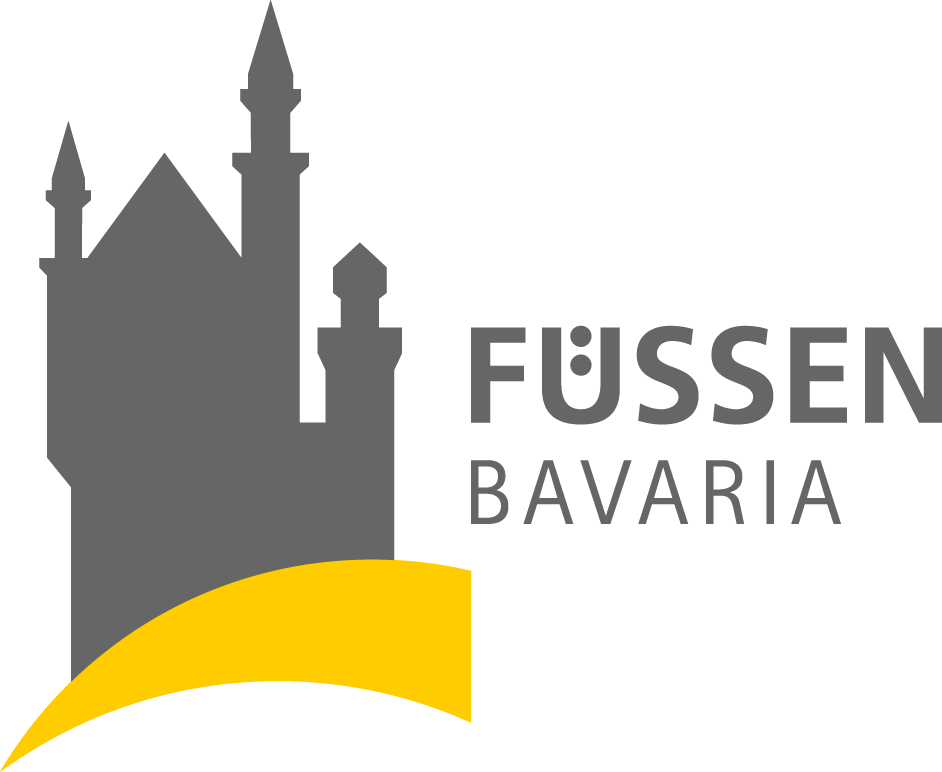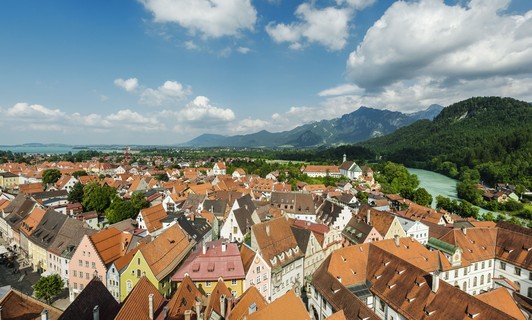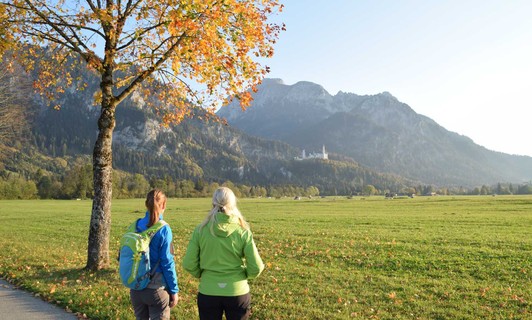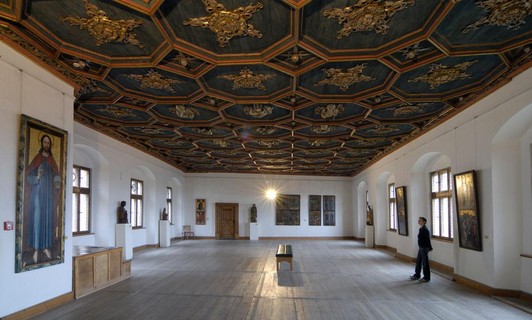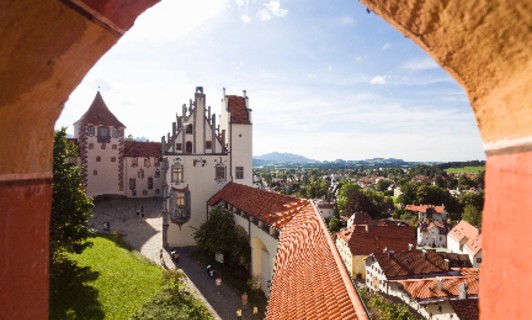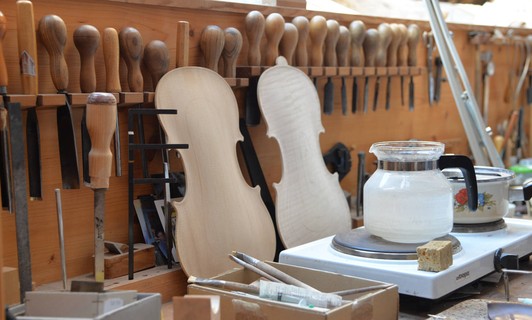- You are here:
- Füssen (english)
- Romantic Soul
- Füssen Heritage Museum
The Museum of Füssen
The Museum of Füssen is located in the southwest wing of the former Benedictine monastery of St. Mang, which was built in the early 18th century under the architect Johann Jakob Herkomer after Venetian model. Together with the High Palace it constitutes one of the main features of Füssen’s townscape.
The former cells of the Benedictine monks house valuable works of art and archaeological finds from the over 1000-year history of this former abbey. It was not only the spiritual center but also the focal point of government and culture in the Füssen area. The medieval cloister that was uncovered below the baroque corridors also provide an insight into the medieval epoch of the history of the Monastery of St Mang. One of the finest collections in Europe of historical lutes and violins recalls Füssen’s importance as the cradle of the commercial manufacture of lutes in Europe. Here in the town on the River Lech the first European lute-makers’ guild was founded in the 16th century.
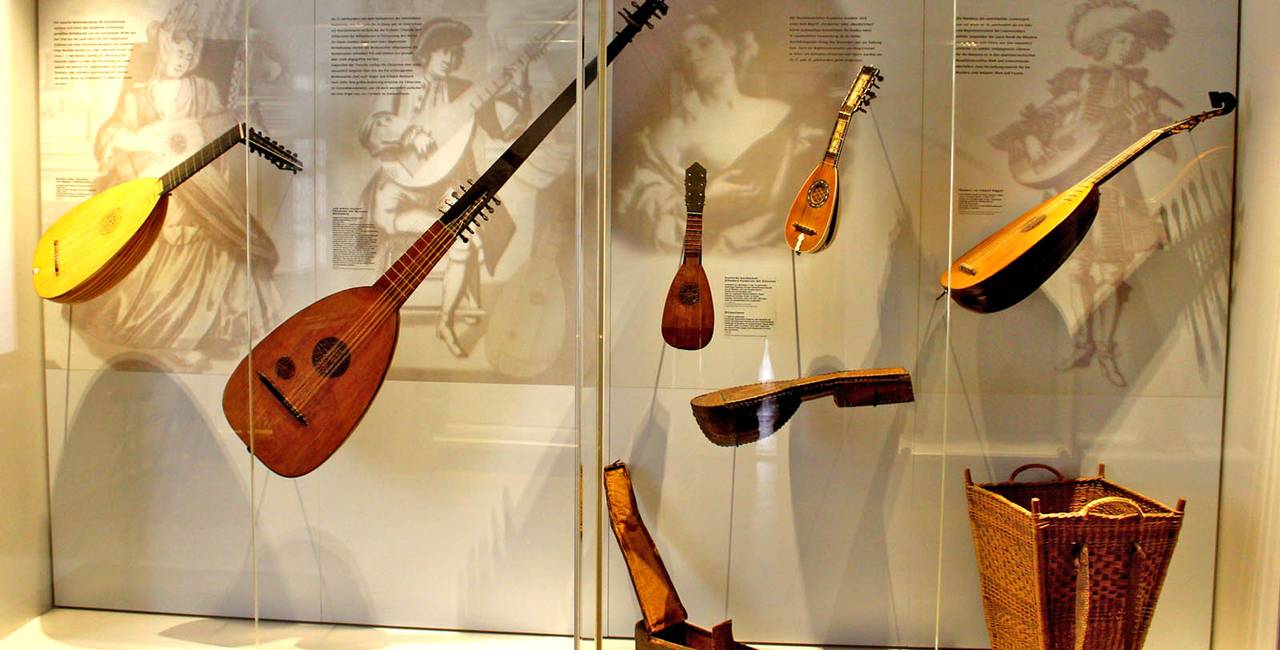
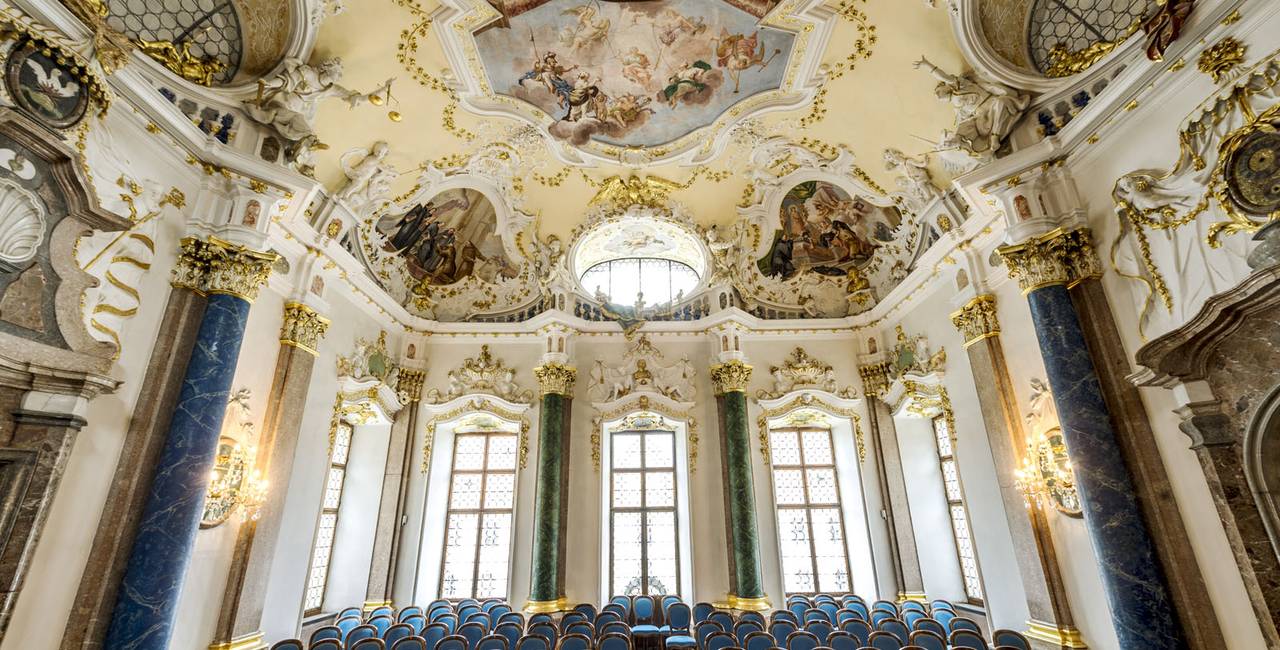

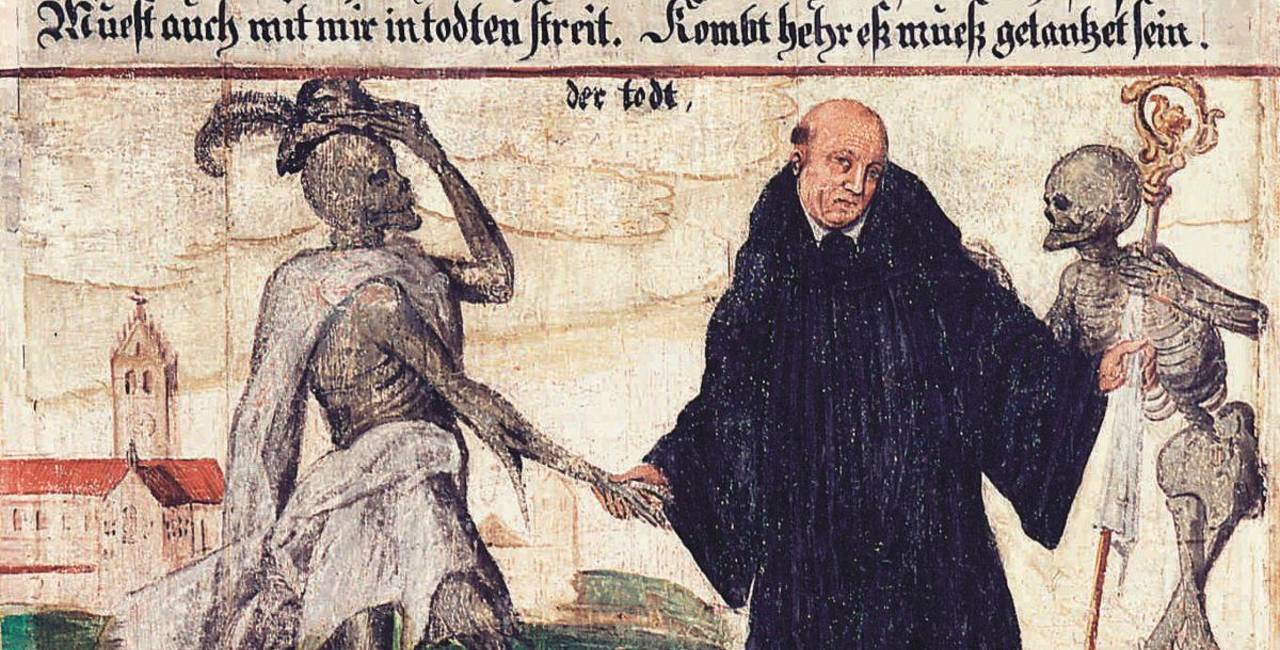
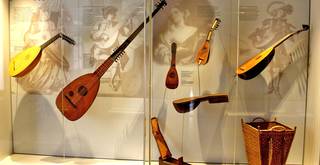
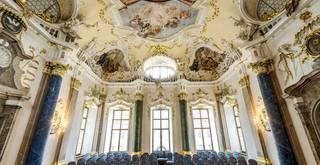
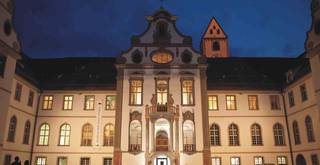
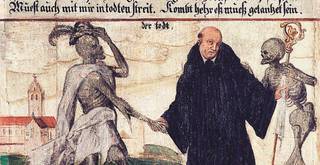
In addition to the lutes and violins from the 17th to 19th centuries, the Munich master violin-maker Karl Leonhardt donated the equipment of his workshop which documents the various stages in the production process of a violin.
One of the museum’s highlights is the monastery’s magnificently decorated baroque halls: the Prince’s Hall, created under the architect Andrea Maini; the library and the refectory beneath it with sculptures by Anton Sturm; the domed Colloquium with frescoes by the Kempten court painter Franz Georg Hermann; the Chapter Hall with the only extant oil paintings by Paul Zeiller, which depict the Benedictine daily saints. In the Anna Chapel, converted into baroque style under Johann Jakob Herkomer, the Füssen Dance of Death by Jakob Hiebeler (1602) can be viewed, the oldest Dance of Death cycle preserved in Bavaria. A further section of the museum houses an exhibition on the town’s history entitled “Emerging into Modernity”.
